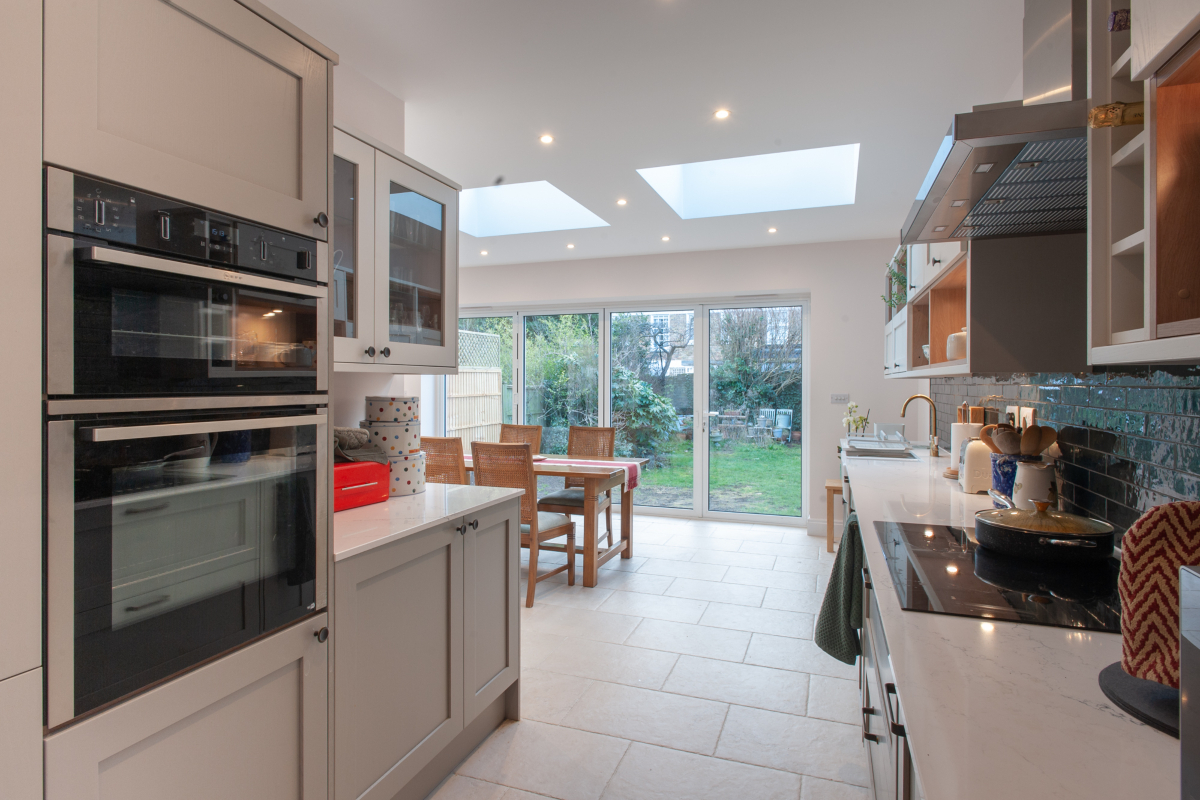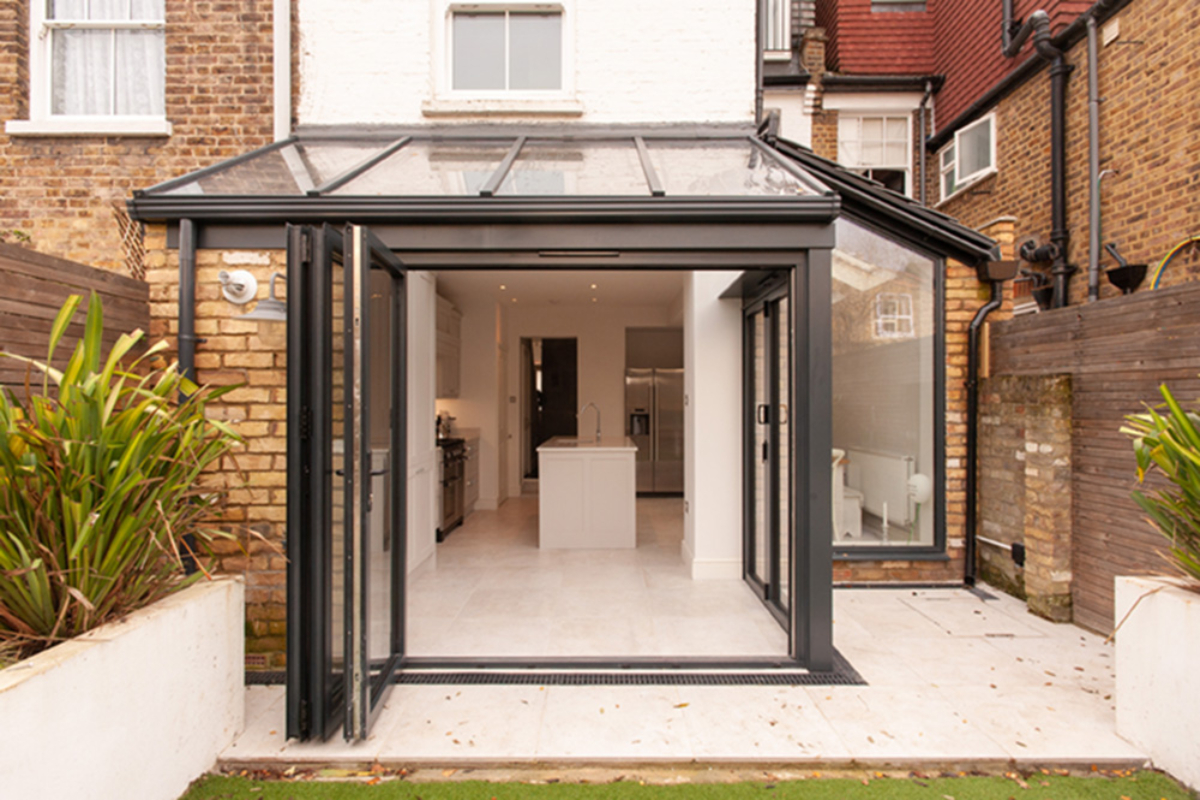Loft conversions have become the go-to solution for homeowners who are looking to add more floor space to their homes without incurring the cost of moving houses. Their versatility, and wide range of designs and styles available, make them particularly prized.
And the Velux loft conversion is the simplest, quickest, and most cost-effective of them all.
But what exactly is a Velux loft conversion? And how can you determine if it is the best fit for your home? Read on below to find out.
What is a Velux loft conversion?
A Velux loft conversion or roof light conversion is the simplest type of loft conversion design. It involves transforming the roof space into an additional room by installing skylight windows to the pitch of the existing roof, while retaining the roof structure.

How does a Velux loft conversion differ from other types of loft conversions?
Velux loft conversions differ from other types of loft conversions, namely, dormer, hip-to-gable, and mansard conversions, in three main ways. These include:
- Construction work required-
As roof light conversions do not involve extending the existing roof, or altering its basic structure, the construction work required is substantially less. As a result, Velux loft conversions are considerably less disruptive, and are quicker to complete.
- Space created-
Without extending the original roof, Velux loft conversions work with the roof space available without the addition of extra head room.
- Cost-
Due to their simplicity, and the minimal construction work involved, Velux loft conversions are significantly less expensive than other types of loft conversions.
Is your home suitable for a Velux loft conversion?
The suitability of a property for a Velux loft conversion depends on the roof space available. As there is no extension of the roof involved, the existing roof space must be sufficient for the creation of an additional room.
This means that there must be adequate headroom and floor space. A minimum head height of 2.8m is required, as well as the necessary floor space for the installation of a staircase.
You should also consider the sturdiness and strength of the existing roof, and the reinforcements that may be required. This is particularly true in modern trussed roofs where the beams may need to be removed without compromising on the stability and support.
However, none of these factors make Velux loft conversions impossible; as this type of conversion is suitable for virtually all property types.
Do Velux loft conversions require planning permission?

Due to the lack of structural changes involved, a clear advantage of Velux loft conversions is that they rarely require planning permission; except when they are constructed on properties listed in conservation areas.
Most loft conversion specialists are well-versed in the specifics of what necessitates planning permission, and what kind of build work falls under permitted developments. This makes loft conversion experts invaluable in terms of the information they provide as well as the advice and expertise they offer.
What are the different factors that must be considered when designing a Velux loft conversion?
Some of the key aspects of designing a Velux conversion involve:
- The placement of the windows- To allow for the best views, natural light, and ventilation, without compromising on your privacy.
- The materials used- A Velux loft conversion doesn’t necessarily require the use of Velux windows! Test out other window brands and designs to select the most suitable one for your loft.
Similarly, the addition of shutters, blinds, or even rain sensors, help you to enjoy the view irrespective of the seasonal changes.
- The placement of the staircase- Ideally, the landing should be located where the head room is the greatest (usually at the roof ridge).
- The interior layout- Arranging the fittings and furniture in a way that makes the best and most efficient use of the space created.
Velux loft conversion ideas

Loft conversions are prized for their versatility in design and function; and deservedly too. This is because, with loft conversions, theoretically, nothing is impossible. And the same applies for Velux loft conversions as well.
Some of the more popular loft designs feature:
- An additional bedroom (or two!)
- A bathroom
- Home office
- Library/ reading nook
- Playroom
- Walk-in wardrobe
Essentially, it all comes down to your requirements as a homeowner, the space and budget available, and the integration of the loft room with the rest of the structure.
It also depends on how well you can use the existing space to meet your needs. For example, the use of awkward corners to create additional storage spaces, increases the flow and efficiency of the room, while reducing the clutter.
While the installation of Velux Cabrio balcony windows helps to add a new dimension of design to your loft space.
Simply put, with smart and innovative designs, your loft conversion can be all that you envision it to be.
How much does a Velux loft conversion cost?

The Velux loft conversion is the most cost-effective solution to converting your loft space into valuable, additional floor space and can range from £35,000 to £70,000.
This is because the cost of the Velux loft conversion depends upon the type and design of the windows and roof lights installed, the floor reinforcements required, additional insulation installed, and the connection to basic utilities and plumbing lines as required.
As such, the cost of a Velux loft conversion is largely dependent upon its utility, and the eventual purpose of the room created. For example, a loft bathroom, with the plumbing, fittings and fixtures required, will cost much more than a loft study room or reading nook.
However, it is also important to remember the fine balance between the cost of the conversion versus the value it adds to your property.
Why should you hire the professionals?

Tempting as it may be to DIY a Velux loft conversion, these builds and conversions are best left to the experts.
This is because the experience and expertise they bring to the process can help you to create the best possible loft conversion at the best possible price. Their knowledge and know-how of the sourcing and efficacy of the materials, placement of skylights, workings of the local council, and the most efficient use of the loft space, enables you to design and create the ultimate loft conversion.
Best of all? Loft conversion specialists often work in specialised teams, so you can be assured of their expertise during the entire project. This includes, but is not limited to:
- Survey of the location
- Architectural designs of the proposed conversion
- Securing the requisite building regulations approval
- Technical expertise
- Daily on-site management of the build
Consequently, the value they bring to the project, makes the investment of hiring the professionals a worthwhile one.
Conclusion
An essential on every homeowner’s wish list is more space. And loft conversions provide exactly that.
And even with so many different design options available, it is easy to see why Velux loft conversions are often the preferred choice for many property owners.
Some of the incredible advantages of Velux loft conversions include:
- They are suitable for almost any type of property
- They are simple and cost-effective
- Do not usually require planning permission
- Require minimal structural work and therefore are quickly constructed with minimal disruption to your daily life
- Help you to add, design, and create fabulous new spaces in your home
And with trusted experts and loft conversion specialists, creating your dream Velux loft conversion becomes an effortless reality.
If you too are considering upgrading your home via a Velux loft conversion, contact the incredible team at Good Design and Build today!
We are the foremost loft conversion specialists, with decades of experience, and unmatched expertise, who can help you to create stunning loft conversions that add space and value to your home.




